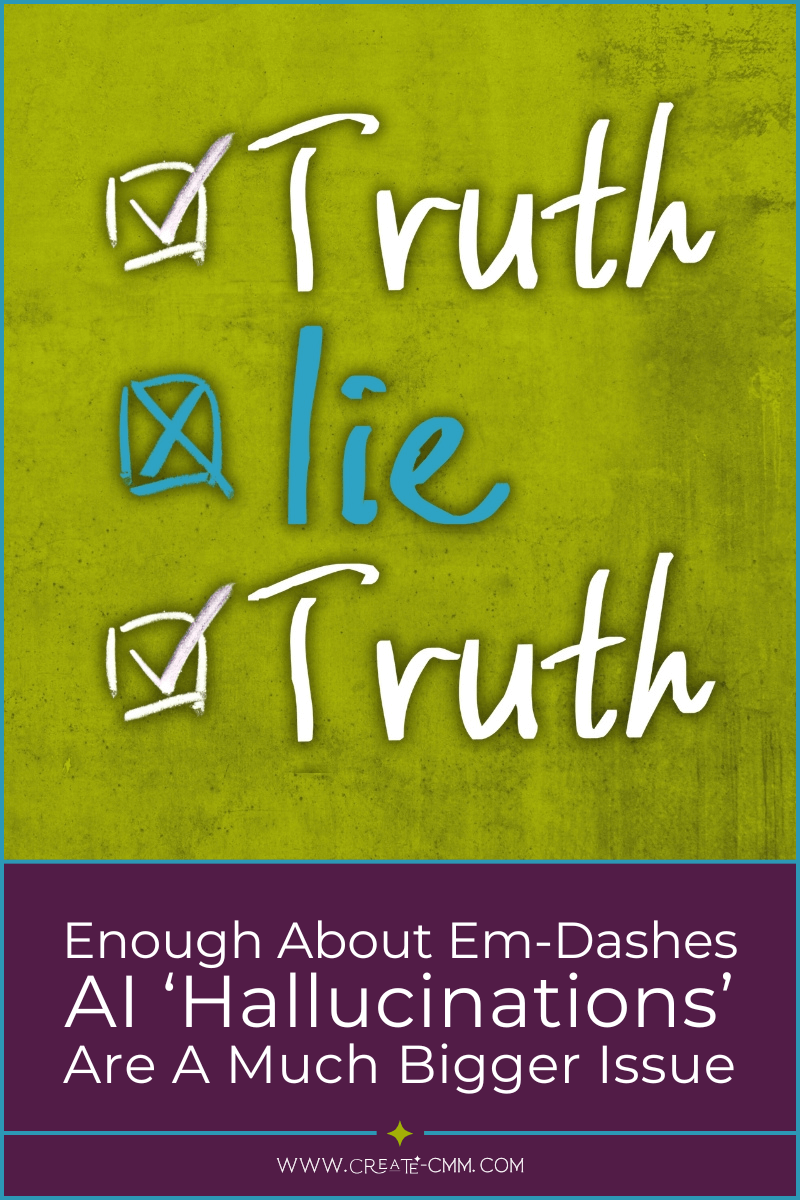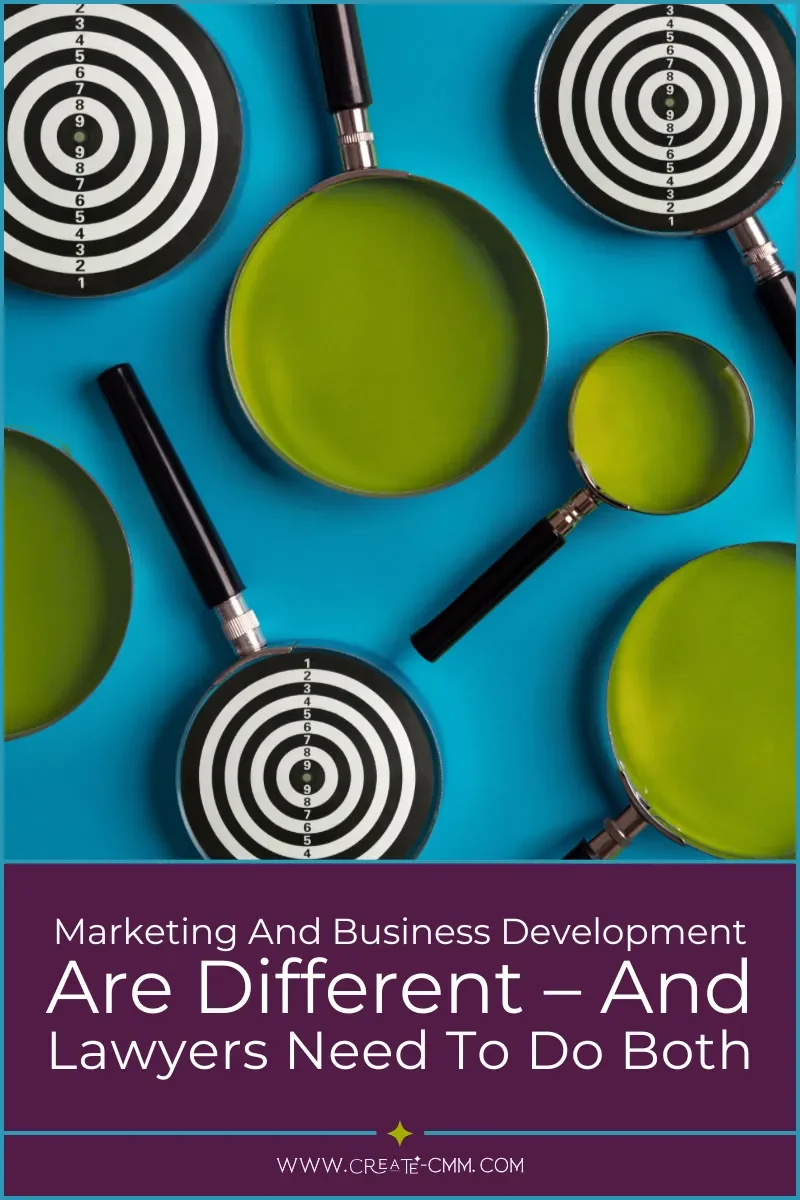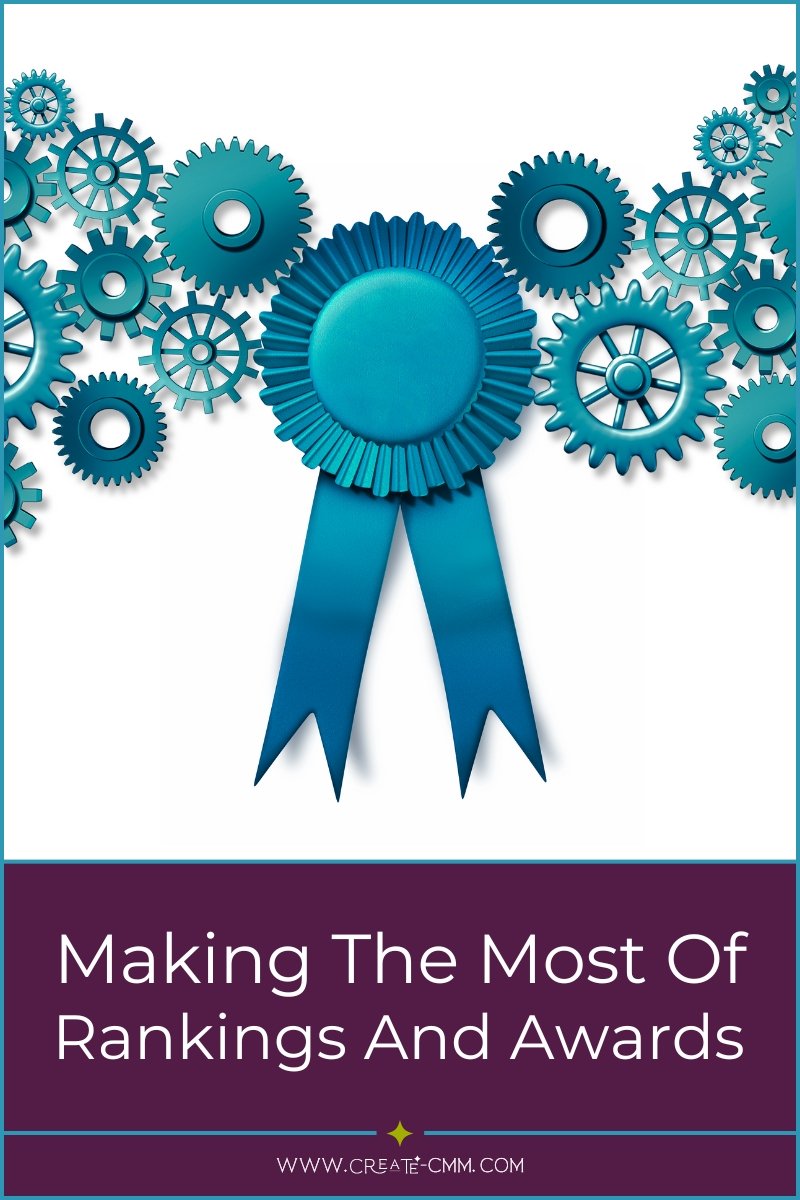How to Start Building a Successful Criminal Defense Practice
Marketing and business development can feel daunting at first, but they don’t have to. Small steps can build success in the future.
In law school we learn the fundamentals you need to be a criminal defense lawyer: Constitutional law, criminal law, evidence, trial advocacy, issue spotting, writing and persuasion skills. You might learn the rest in public service as a state or federal defender or prosecutor, or as an associate in a law firm. But one thing you didn’t learn in law school, the defender’s office or (unfortunately) in most law firms is how to build a successful, profitable legal business.
However you came to your current practice as a criminal defense lawyer, it’s likely that, for a time, your work came to you. Clients and cases landed on your desk because you were next on the rotation, assigned to a courtroom or part of a larger team.
But what happens once you leave public service and open your own solo practice, join a small firm, or take on the role of a more senior associate in a larger firm where you are now expected to start bringing in clients?
For many lawyers, no matter what their practice, the realization that you need to function not only as a lawyer—the doer of the client’s work—but also as a marketer -- the seller of your services (and perhaps those of your firm) -- can as anxiety-provoking as it is exhilarating.
The good news is that you don’t need to have a big marketing budget, devote endless hours of time or make major changes to your daily work routines to see measurable client development success. You likely have the foundation for developing a successful criminal defense practice already, and with clarity, consistency and a willingness to make small, intentional marketing and business development efforts, you can build on that foundation over time.
Go-to-Market Plans — The Power Tool for 2026 and Beyond
Go-to-Market Plans — The Power Tool for 2026 and Beyond
As is typical in the last months of the calendar year, most law firms are in the process of planning for 2026: mapping out business development objectives, developing marketing strategies and plans, and evaluating budgets.
In recent years, forward-looking firms have added a powerful tool to their strategic planning: the go-to-market plan.
GTM plans have long been used in business-to-consumer sectors as well as in business-to-business sectors where companies regularly introduce new products, services or market innovations, such as in manufacturing; technology; consulting; and professional services including information technology, financial services, advertising and engineering. Increasingly, law firms are using GTM plans to introduce new practices, industry teams, cross-practice initiatives — artificial intelligence; environmental, social and governance; and sustainability, privacy, and cybersecurity and regulatory advisory groups, for example — and value-add client service programs, as well as to refine, redefine and reposition existing teams and services to take advantage of new market opportunities and hedge against downside economic and business risks.
From Invisible to In-Demand: Jumpstarting Your Marketing
Business development can feel daunting for young lawyers — but it doesn’t have to. Start now for success in the future.
This month’s column is for my young associates out there. I see you putting in your daily billable hours (and then some). You’re building your legal knowledge, honing your skills in your practice area and earning the trust of partners, who are giving you more responsibility on more-complex matters all the time.
Then, one day, you hear a phrase that makes your stomach churn: “You should be thinking about bringing in clients.”
Maybe it’s a comment in passing while you’re working on a matter together. Or maybe it’s during your annual review or a conversation about the partnership track.
Either way, it can feel as if the rules somehow changed while you had your head down, focused on your client work.
The skills that earned you praise — and better assignments — up until now suddenly aren’t enough to ensure your future at your firm.
You’re expected to develop business. But no one has ever really explained how. And when are you supposed to find time for business development on top of all the client work?
Panic sets in. Is this one of those “tree planting” situations? Was the best time to start business development years ago, and now you’re stuck with the second-best time?
Well, yes. The earlier you adopt the mindset and habits you need for business development, the more natural — and less intimidating — it eventually becomes. But the good news is that you’re not as far behind as you think. You likely have some of the foundation for successful business development in place already. And you don’t need to devote huge amounts of time or make major changes to see measurable success.
Enough About Em-Dashes … AI ‘Hallucinations’ Are a Much Bigger Issue
I was all set to write a post on the uproar over whether em-dashes are a telltale sign of artificial intelligence-generated content—I have strong feelings about this—but there’s a much more troubling AI indicator out there.
As you can probably tell, I have no problem with em-dashes in moderation. AI is trained on content written by human beings and many writers happen to use em-dashes. I believe people seized on the idea that em-dashes are a sign of AI because they’re worried readers can’t distinguish between content generated by AI and content written by human beings. So they malign punctuation that does nothing more than separate information or a thought from the rest of a sentence.
I’m far more troubled about a documented marker of AI-created content, a phenomenon known as AI “hallucinations” that’s cropping up in chatbot-generated content. “Hallucinations” is a euphemism for “making stuff up.” Or, as OpenAI, the company behind the generative AI chatbot ChatGPT, calls it, “a tendency to invent facts in moments of uncertainty.”
Marketing and Business Development Are Different – and Lawyers Need to Do Both
There are a lot of myths and misconceptions about marketing and business development in legal services. I hear some variations of these top fallacies all the time:
“Marketing means advertising, and advertising means billboards on I-95, or bad radio or television ads.”
“Marketing is unethical, unnecessary and uncouth. The law is a noble profession; if we do good work, our reputation and referrals will bring clients to us.”
“Marketing is only for (large) law firms, not lawyers (or solo practitioners or small firms).”
“Blogs/email marketing/online marketing/social media marketing is dead/irrelevant/ineffective/a waste of time.”
None of these is true, but they remain pervasive (despite my best efforts).
AI And The ‘Right Now’ Of Legal Marketing: Becoming A Trusted Legal Resource In An AI-Shaped Market
If you spend any time on LinkedIn these days (and if you don’t, you should be!), you can’t escape posts, comments, discussions and near-violent throwdowns about AI and its impact on, well, everything.
AI is such a well-known term at this point that we don’t even bother to spell it out on first reference anymore.
Where once AI was a futuristic concept — something akin to Hal in “2001: A Space Odyssey” — it’s now part of our everyday personal and business lives.
Most of us have used, or at least know about, Generative or GenAI — ChatGPT, Claude and DALL-E, for example. This year’s Super Bowl LIX advertising lineup featured a Salesforce ad with Matthew McConaughey showcasing agentic AI — superpowered chatbots or smart assistants with autonomous decision-making and task execution capabilities.
Content That Converts: Get More Work by Being Visible, Credible and Findable
It’s every hard-networking lawyer’s dream scenario—work just falls into your lap.
Imagine this scenario: You're at a legal or industry conference. At the registration table a fellow attendee turns to you and says, “I’ve been reading your articles on LinkedIn—really interesting!” Maybe you know the person, or maybe you don’t. But you’re pretty sure they’ve never liked or commented on your posts before. Maybe this happens again at the networking lunch or at the cocktail hour. Someone comments positively on your recent article or post.
A week later, a client inquiry comes in from a referral. You’ve never met the referral source—or even more likely, the client doesn’t tell you who referred them to you.
No pitching, no pursuing. The client and the work came to you.
Believe it or not, this is not a dream.
It happened to a client of ours.
And, even better, it actually happens quite often.
Content That Converts: Get More Referrals by Being Visible, Credible and Findable
My team and I were having a status meeting with a client recently, to look at the first six or so months of a marketing and business development program. He already had a well-deserved reputation as an accomplished criminal defense strategist and a skilled trial lawyer within the criminal defense community, particularly in his geographic region. Our LinkedIn-based campaign had as its goals to reinforce his reputation, highlight his expertise and increase his visibility with a wider audience of potential referral sources. The core components of our strategy included updating his LinkedIn profile to show his experience as well as his approach and work style, expanding his connections on the networking platform and publishing his monthly criminal law articles in a LinkedIn newsletter and on his account.
Client Service in the Time of Chaos
The legal industry — Big Law, in particular — is having a moment in the media spotlight. The glare is starting to feel like an interrogation light shining directly into our eyes.
Then there’s the economy. Are we headed for a recession? Trade wars? A market crash?
Clients are nervous. Lawyers are anxious. Firm leadership is skittish. Everyone needs reassurance, but that’s in short supply at the moment.
For lawyers and firms, and their marketing professionals, now is the time to up their go-to-market efforts.
Wait. The world feels like it’s on fire, and I’m suggesting … marketing?
Real Life Lessons In Marketing and Business Development: A Case Study
In past articles I’ve talked about different marketing and business development topics and (hopefully) given some practical advice on strategy and tactics. But, often, there is a big gap between strategy and implementation—or between “here’s what you should do” and “here’s how it works in practice.” Lawyers I’ve worked with have told me that sometimes the gap feels so large, the task of marketing themselves so overwhelming, or the possibility of success so abstract, that they throw up their hands and do nothing.
I get it. Why spend time and energy on marketing tasks that you’re not sure are the right ones or what success would even look like?
Instead of theory and strategy, let’s talk real life lessons in marketing and business development in the form of a case study on marketing and business development for a criminal defense lawyer.
If Your Audience Doesn’t Hear You, Are You Really Marketing?
Tap, tap, tap! Is this thing on?
Does it sometimes feel as if your marketing is falling flat? You’re putting out insightful content —blogging or writing articles. You’re speaking on panels and giving presentations. Perhaps you’re a regular presence on LinkedIn, commenting and even posting a few times a week.
Still, you don’t seem to be getting any traction and certainly not any clients or work from your efforts. It’s discouraging.
If you’ve got the marketing blues, I have some good news. Your marketing probably isn’t “wrong”; it’s just not reaching the right audiences.
At its most basic, your marketing objectives are to establish your expertise (through your content), enhance awareness (with the right audiences) and build trust (with those who make or influence the hiring decisions).
If your marketing is focused on showcasing your knowledge, skills and experience — your expertise — but it isn’t consistently reaching or engaging the people who would hire or refer you you’re missing two of the three critical marks.
The Legal Marketer’s Gift Guide for Lawyers
The season of giving is upon us!
The period from Thanksgiving to New Year’s is full of opportunities for giving and receiving all kinds of presents, donations and tokens of appreciation.
There are a variety of holidays that involve gifts large and small — Christmas, Hanukkah, Kwanzaa and Festivus (the original Festivus, not the “Seinfeld” version, included small gifts, although we could consider the airing of grievances to be gifts). We are encouraged to participate in food, clothing and toy drives; give generously on Giving Tuesday; or consider end-of-tax-year charitable donations.
Gift-giving guides for every kind of recipient abound, from what to give the pickiest of relatives and friends to the best gifts for your office Secret Santa, Pollyanna or Yankee Swap. There are even gift guides for how to treat yourself while you’re buying for others (a trend I highly approve of).
In the spirit of the holiday season, I thought I would offer my own version: The Legal Marketer’s Gift Guide for Lawyers, a curated list of some of the best marketing-focused gifts lawyers can give themselves, their clients and others.
The “S-Word” in Criminal Defense: Why Sales Shouldn’t Be Taboo
To criminal defense lawyers, the idea of "sales" might seem unrelated—perhaps even antithetical—to your daily practice. You would not be alone in that thinking. Many lawyers and firm leaders across practice areas are uncomfortable with the idea of proactively selling their services. In fact, this discomfort has deep roots in the legal profession, where law has long been viewed as a noble calling rather than a commercial enterprise. In today’s legal market, however, embracing a mindset that views proactive business development (another way to say sales) as a collaborative process that focuses on client service and trust building—can improve not only your current client relationships, but also your marketing and business development efforts.
What’s Your Persona? Using Client Personas To Drive Marketing and Business Development
Who are your ideal clients and why do they (or should they) hire you?
This simple but key question for marketing and business development is often deceptively challenging to answer. Most lawyers and practice groups can describe the general category of their target clients — Fortune 100 companies, high-net-worth individuals, private equity funds, technology startups, advertising agencies, commercial real estate developers, pharmaceutical and life sciences companies, etc. But they often can’t identify with specificity which prospects within those categories would be ideal clients for their practice.
As a result, they are likely spending time, energy and money marketing to an audience that might be too broad, using messaging that doesn’t resonate with — and perhaps doesn’t even reach — the clients they want to attract. It may also mean taking on work for less-than-ideal clients and missing opportunities to build client relationships with gold-standard clients that could not only lead to better and more satisfying work but also open doors to other similar clients.
Developing client personas can help maximize marketing and business development resources as well as boost profitability by bringing in more and better (and perhaps better paying) clients.
Why ‘sales’ shouldn’t be taboo in legal services
I’m a swear-word enthusiast. I actually have that in my LinkedIn profile headline.
To know me is to know my creative use of the F-word — noun, verb, adjective, adverb, expletive.
I love a good unmentionable word.
And I’ve noticed a taboo term popping up lately in legal service marketing — the “S-word”…
Sales.
There, I said it.
The idea that lawyers and firms don’t — or shouldn’t — “sell” to clients and prospects remains widespread.
I think it’s time we change this perspective. It’s neither practical nor sustainable in a legal services marketplace, where competition to keep clients and attract new ones is intense and the ability to stand out from the crowd is increasingly challenging for both lawyers and firms.
It’s also not what clients want or what serves them best in the long run.
Leveraging Rankings and Awards for Visibility
In a recent blog post, we talked about how to make the most of the annual process of gathering the matters and references needed for submissions to research-based legal awards and directories. (You can read our blog post here: https://www.create-cmm.com/blog/making-the-most-of-rankings-and-awards.)
In this blog post, we’re giving you tips for getting the most visibility out of your recognitions, whether that’s one or many this awards season.
To truly get the most visibility out of rankings, recognitions and awards, you need to do some planning before the first submission packet is ever uploaded.
Learning the Lingo: How Industry Jargon Can Enhance or Hurt Marketing Content
Every time a marketing content writer takes on a client in a new industry, we’re faced with learning at least one new set of business jargon— the client’s jargon — and often the industry-speak of the client’s clients as well.
The question is: How much jargon should we use in the content we create for our clients?
On the one hand, our job as marketing content writers is to help our clients show that they speak their clients’ language. On the other hand, peppering copy with too many industry-specific terms can alienate even the intended audience, not to mention the broader audience.
Jargon refers to terms and expressions used within a profession or industry that may be difficult for those outside the industry to understand. It often takes the form of shorthand for more complex processes. Often, jargon isn’t too difficult to figure out. For example, “capability uplift” is a human resource term that means investment in training and development to help employees build skills and knowledge. In the website development world, the term “breadcrumbs” is short for a site’s secondary navigation system that shows users the location of a webpage in relation to the rest of the site.
Conscious Cross-Selling — or Why What Your Partners Don’t Know Can Hurt You
At the end of 2023, BTI Consulting Group released its yearly in-depth look at the legal services market, “BTI Practice Outlook 2024: Navigating Legal Spending and Needs in the New Unpredictable World.” BTI’s report (and follow-on webinar) suggested an increased demand for outside counsel hiring, predicting that this area of legal spend is on track to set another record in 2024. The anticipated growth is being driven by increased regulatory concerns, the rapid adoption of technology—including generative AI—across industries, employee activism, and the need for companies to be both resilient and innovative in the current economy. The report identified six industries (high tech, pharma, financial services, health care, private equity and food/agritech) and six practice areas (labor and employment, cybersecurity, commercial litigation, bet-the-company matters (including regulatory enforcement matters), class actions and intellectual property litigation) that BTI predicts are poised for rapid growth in legal spending.
Based on research interviews with general counsel and chief legal officers, the report also concluded that while clients are open to hiring new firms, there is a desire to give more work to a core group of their existing firms, in what BTI is calling “quiet convergence.”
Making the Most of the Rankings and Awards Process
A perennial question in legal services marketing is whether recognitions and rankings such as Chambers and Legal 500 actually have any impact on legal hiring. Just this week alone, I listened to two different guests on the same legal marketing podcast discuss this question. (The upshot: rankings are not entirely inconsequential, but they are not as impactful as the ranking organizations want you to believe.)
Participating in these programs is time-consuming and labor-intensive for lawyers and marketing professionals. Beyond the costs of those resources (or the cost of hiring an outsourced resource to assist with the submissions process), these programs are becoming increasingly expensive in other ways. Call it “shrinkflation.” While research-based ranking programs are typically not “pay to play” in that you don’t pay to submit, what you receive “for free” seems to be shrinking as the organizations running these programs offer more and costlier paid add-ons—enhanced firm and lawyer profiles, client and market intelligence reports, and extra “tools” for better submission development and management, for example.
LinkedIn Basics for Lawyers – A Three-Step Approach to Using LinkedIn to Boost Visibility
If you’re not actively using LinkedIn, you’re missing out on opportunities to connect with clients and referral sources.
The No. 1 professional social media site, LinkedIn has evolved well beyond its roots as a digital job board in the almost 20 years it’s been around. As of June 2022, LinkedIn had more than 190 million users in the United States and 830 million worldwide, professionals from 149 industry categories, including Information Technology and Services (No. 1 as of January 2022), Hospital & Health Care (2), Construction (3), Financial Services (6), Accounting (7), Government Administration (11) and Banking (13) in the top 20 alone.
Your clients and referral sources are on LinkedIn, and so are your competitors (Law is No. 39).
You need to be there too.




















